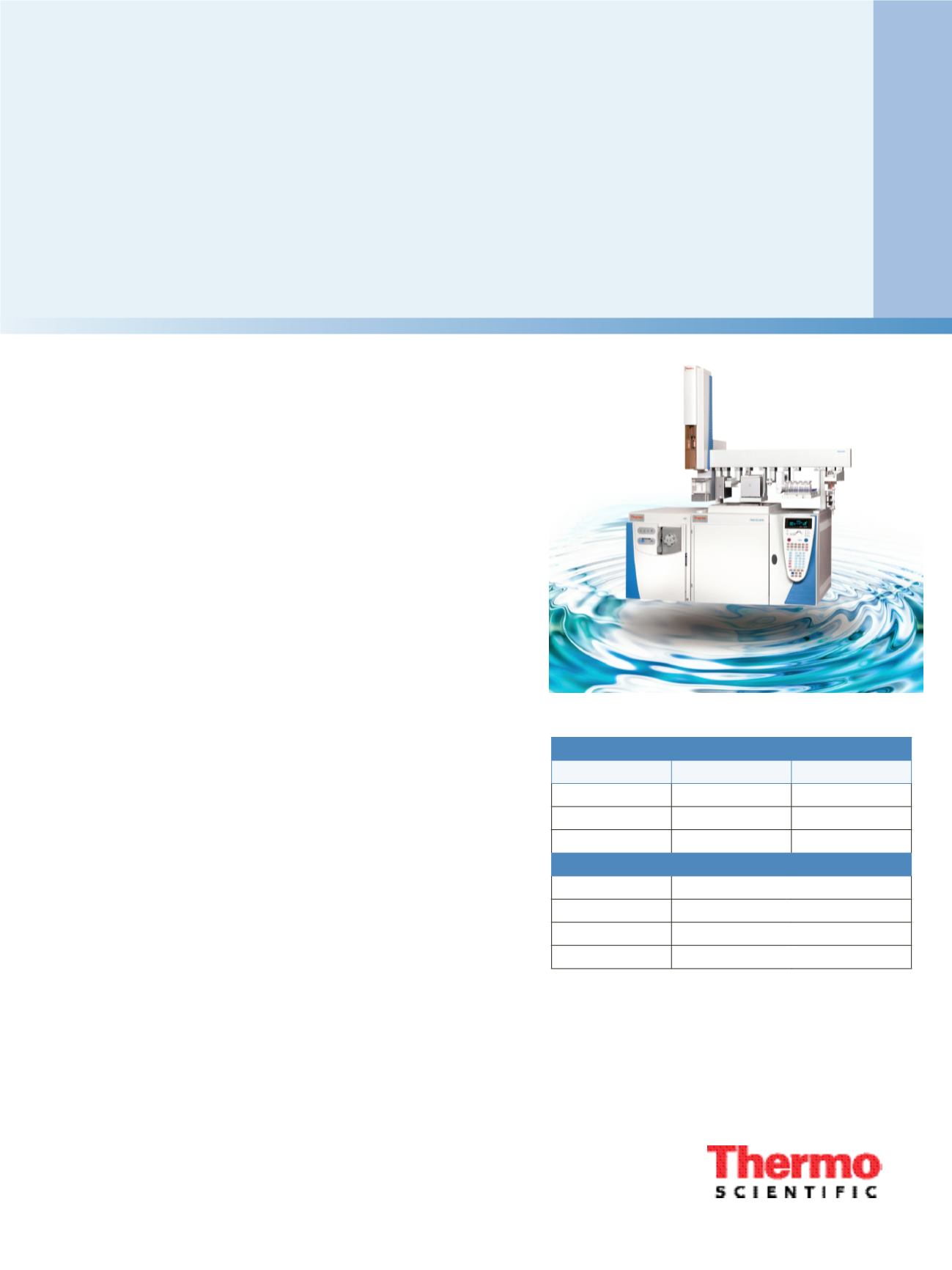

Determination of 1,4-Dioxane in Drinking
Water by Gas Chromatography/Mass
Spectrometry (GC/MS) with Selected Ion
Monitoring (SIM)
Mark Belmont, David Steiniger, Eric Phillips, Sergio Guazzotti, Pat O’Brien, Alexander Semyonov
Thermo Fisher Scientific, Austin, TX
Application Note 52295
Key Words
ISQ Single Quadrupole GC-MS, TRACE GC Ultra, TriPlus RSH autosampler,
PTV inlet, Sequential SIM/Full Scan, EPA Method 522, Environmental
Introduction
1,4-Dioxane is used mainly as a stabilizer for
1,1,1-trichloroethane for transport in aluminum
containers. It is an irritant to eyes and respiratory system
and suspected of causing damage to nervous system, liver,
and kidneys.
1
In 2008, testing sponsored by the U.S.
Organic Consumers Association found dioxane in almost
half of tested organic personal-care products.
1
Of the total
1.163 million pounds of 1,4-dioxane released into the U.S.
environment in 1992, as reported to the Toxics Release
Inventory, 680 thousand pounds (58.5%) were released
into the atmosphere, 450 thousand pounds (38.7%) were
released into surface waters, and 33 hundred pounds
(2.8%) were released onto the land (TRI92 1994).
2
In
2005, the New Hampshire Department of Environmental
Services Waste Management Division started enforcement
of an Ambient Groundwater Quality Standard reporting
limit of 3 µg/L and trending towards a detection limit of
0.25 µg/L. 1,4-Dioxane has been detected in drinking
water in the U.S. at a concentration of 1 µg/L. This
application highlights the use of SIM/Full Scan to identify
unknowns with a NIST library, while producing accurate
results that meet EPA Method 522 requirements.
Experimental Conditions
Data was collected using a Thermo Scientific ISQ single
quadrupole mass spectrometer utilizing the Thermo
Scientific TriPlus RSH autosampler and a PTV inlet
(CT-Splitless mode) on a Thermo Scientific TRACE GC
Ultra gas chromatograph. The mass spectrometry data
was collected in Full Scan (FS), selected ion monitoring
(SIM), and SIM/Scan modes. A Thermo Scientific
TraceGOLD TG-624 column (30 m × 0.25 mm ID, 1.4 µm
film thickness; p/n 26085-3320) was used with a Siltek
®
deactivated baffle liner (p/n 453T2120). Table 1 lists the
GC parameters. The ion source temperature of the mass
spectrometer was set to 230 °C. The instrument was tuned
to meet the bromofluorobenzene (BFB) criteria for this
method. See Figure 1.
1,4-Dioxane calibration standards were prepared in
dichloromethane as per the method to provide a range
from 0.05 ppb to 40 ppb of dioxane.
Table 1. GC parameters
GC Oven Ramp
Ramp
Temp
Hold
30 ˚C
1 min
7 ˚C/min
90 ˚C
0 min
20 ˚C/min
200 ˚C
3 min
PTV Inlet
Temperature
200 ˚C
Split Flow
30 mL/min
Splitless Time
0.50 min
Solvent Valve Temp
100 ˚C



















